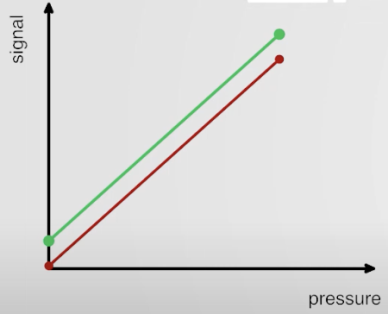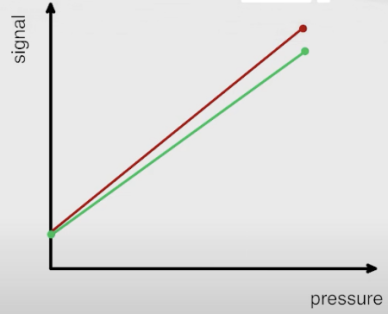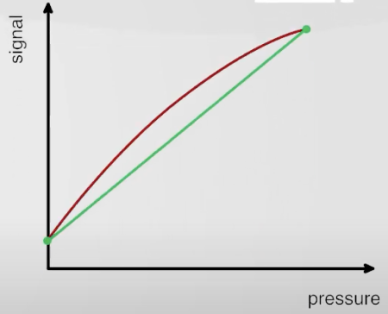Three specific types of errors have a negative impact on pressure sensor accuracy. This easy-to-understand video from WIKA explains the difference between zero-point errors, span errors, and non-linearity.
Inaccuracies in pressure instrumentation occur when the output signal deviates from the desired measuring result. When pressure readings are higher or lower than actual, you risk the performance and safety of your application. Therefore, it is important to recognize the errors – and to understand how they come about.
Three Types of Errors That Cause Pressure Sensor Inaccuracies
Using a simple analogy and easy-to-follow animation, this short video from WIKA describes the three main errors that affect pressure sensor accuracy:

Zero-point error
Zero-point error
The start of the measuring range is too high or too low – the deviation from the zero point. This type of pressure sensor error shifts the entire scale up or down (red line) by that zero offset value in parallel with the ideal characteristic curve (green line).

Span error
Span error
The distances between the individual divisions – the span – from the zero point to the full-scale value are even but wrong; the span is either consistently larger or smaller than the ideal. At the lower end of the scale, span errors are not very obvious. It is at the upper range that the pressure output deviates noticeably from the actual.

Non-linearity
Non-linearity
With this type of sensor error, the distances between the individual divisions from the zero point to the full-scale value are not evenly distributed. This non-linearity has the effect of producing output signals that change at an inconstant rate, thus creating a curved line rather than the straight line of the ideal.
Some users use the terms pressure sensor accuracy and pressure sensor non-linearity interchangeably. But as the video demonstrates, non-linearity is just one of the errors that cause inaccuracies. And in real life, more than one error can occur at the same time. This can have the effect of canceling each other out or compounding the inaccuracies.
What to Do about Pressure Sensor Inaccuracies
In real life, pressure sensors are not 100% accurate – not even calibration-grade equipment. For example, WIKA’s CPG2500 precision pressure measuring instrument has an accuracy of 0.008% of IS (IntelliScale) and a precision of 0.004% of full scale.
Standards organizations like the IEC (International Electrotechnical Commission) set allowable maximum errors for devices. For example, our S-20 superior pressure transmitter comes in three accuracy specifications of non-linearity: ≤ ±0.5%, ≤ ±0.25%, and ≤ ±0.125% of span. Its factory-set zero-point errors are either ≤ ±0.2% or ≤ ±0.1% of span.
Regular calibrations ensure that a pressure sensor’s errors remain within allowable limits. The recommended calibration interval for electrical measuring instruments is one year.
WIKA USA, Smart in Pressure Sensing
WIKA is a global leader in industrial pressure measuring solutions, offering a comprehensive portfolio of pressure gauges, pressure sensors, process transmitters, diaphragm seal systems, pressure valves, and other accessories. The product specialists at WIKA USA look forward to answering your questions about pressure sensor accuracy and solving your pressure measurement challenges. Contact us for more information.
Products mentioned in this article:
• CPG2500 precision pressure measuring instrument
• S-20 superior pressure transmitter


Nice post.
Nice response.